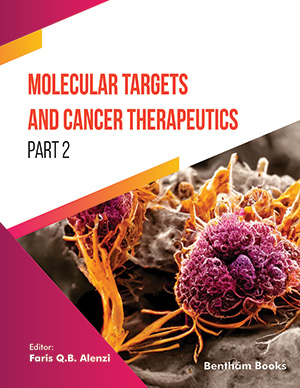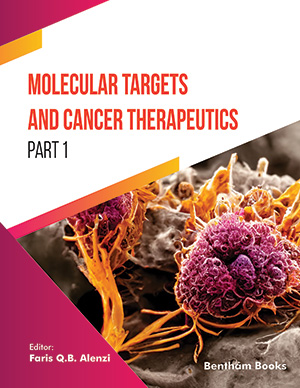Abstract
Acute myocardial infarction (AMI) is a major cause of morbidity and mortality worldwide. AMI causes necrosis of cardiac cells and triggers a complex inflammatory response, affecting infarct size, cardiac function and clinical outcomes. This inflammatory response can be divided into 3 phases: 1) the pro-inflammatory phase, in which the release of damage-associated molecular patterns from necrotic cells triggers the secretion of pro-inflammatory mediators and attracts immune cells to clean the debris, further damaging viable myocardium, 2) the reparative phase, in which anti-inflammatory signals activate immune-modulating cells and trigger the production of a stable scar, 3) the maturation phase, in which inflammatory and fibrotic signals are suppressed, but may persist, leading to left ventricular adverse remodelling. Thus, the inflammatory response is an appealing therapeutic target to improve the outcomes of patients with AMI. Numerous anti-inflammatory therapies have shown potential in animal models, but the translation to human trials exhibited limited benefit. Glucocorticoids and non-steroidal anti-inflammatory drugs showed signals of harm due to their non-specific effects. Other broad inhibitors, e.g., methotrexate, cyclosporine, or colchicine, did not improve clinical outcomes as acute therapies for MI. Specific inhibitors of the complement cascade, adhesion molecules, or inflammatory mediators were mostly disappointing in humans. However, an interleukin-1 inhibitor (anakinra) and a matrix metalloproteinase inhibitor (doxycycline) improved clinical outcomes in patients with AMI. Promising RNAse1, anti-toll-like receptor 2 antibodies, and inflammasome inhibitors still need to be tested in humans. Finally, positive results should be replicated in large clinical trials before they can be implemented into the standard AMI therapy.
Keywords: Inflammation, myocardial infarction, anti-inflammatory, treatment, repair, remodelling, outcome.
[http://dx.doi.org/10.1161/CIRCRESAHA.114.302721] [PMID: 24902970]
[http://dx.doi.org/10.1093/eurheartj/ehy394] [PMID: 30165437]
[http://dx.doi.org/10.1056/NEJMra071667] [PMID: 17855673]
[http://dx.doi.org/10.1016/j.pharmthera.2018.01.001] [PMID: 29330085]
[http://dx.doi.org/10.1111/bph.14155] [PMID: 29394499]
[http://dx.doi.org/10.1038/nrcardio.2016.185] [PMID: 27905474]
[http://dx.doi.org/10.1016/j.trsl.2015.07.002] [PMID: 26241027]
[http://dx.doi.org/10.1016/j.jacc.2016.01.073] [PMID: 27126533]
[http://dx.doi.org/10.1161/CIRCRESAHA.116.303577] [PMID: 27340270]
[http://dx.doi.org/10.1038/nrcardio.2014.28] [PMID: 24663091]
[http://dx.doi.org/10.1016/j.jacc.2014.01.014] [PMID: 24530674]
[http://dx.doi.org/10.3390/jcm8081109] [PMID: 31357404]
[http://dx.doi.org/10.1007/s10557-014-6568-z] [PMID: 25583678]
[http://dx.doi.org/10.1016/S0008-6363(99)00354-5] [PMID: 10728386]
[http://dx.doi.org/10.1023/A:1011335525219] [PMID: 11445670]
[http://dx.doi.org/10.1093/cvr/cvs018] [PMID: 22266751]
[http://dx.doi.org/10.1517/14728222.2016.1088005] [PMID: 26420647]
[http://dx.doi.org/10.1038/nature04515] [PMID: 16407890]
[http://dx.doi.org/10.1016/j.immuni.2013.08.001] [PMID: 23954133]
[http://dx.doi.org/10.1016/j.ijcard.2012.04.047] [PMID: 22578950]
[http://dx.doi.org/10.1038/nature08780] [PMID: 20203610]
[http://dx.doi.org/10.1160/th14-08-0703] [PMID: 25354936]
[http://dx.doi.org/10.1161/CIRCRESAHA.115.307961] [PMID: 26846641]
[http://dx.doi.org/10.1161/JAHA.116.004541] [PMID: 28637776]
[http://dx.doi.org/10.1074/jbc.M306793200] [PMID: 14660645]
[http://dx.doi.org/10.1016/j.gene.2013.05.041] [PMID: 23727604]
[http://dx.doi.org/10.1161/CIRCULATIONAHA.108.769331] [PMID: 18574060]
[http://dx.doi.org/10.5603/CJ.2013.0159] [PMID: 24338536]
[http://dx.doi.org/10.1093/cvr/cvn163] [PMID: 18558628]
[http://dx.doi.org/10.1161/CIRCULATIONAHA.107.757443] [PMID: 18824741]
[http://dx.doi.org/10.1161/CIRCRESAHA.107.158220] [PMID: 18007026]
[http://dx.doi.org/10.1161/01.CIR.0000101921.93016.1C] [PMID: 14656915]
[http://dx.doi.org/10.1161/01.CIR.0000112575.66565.84] [PMID: 14970116]
[http://dx.doi.org/10.1161/CIRCULATIONAHA.105.000901] [PMID: 16820585]
[http://dx.doi.org/10.1161/CIRCULATIONAHA.109.880187] [PMID: 20026776]
[http://dx.doi.org/10.1161/CIRCINTERVENTIONS.111.967596] [PMID: 22354933]
[http://dx.doi.org/10.1161/CIRCULATIONAHA.116.023527] [PMID: 28356441]
[http://dx.doi.org/10.1007/s00395-012-0250-z] [PMID: 22318783]
[http://dx.doi.org/10.1007/s12272-014-0527-x] [PMID: 25559468]
[http://dx.doi.org/10.1161/01.RES.75.3.546] [PMID: 8062428]
[http://dx.doi.org/10.1016/S0002-9440(10)63650-4] [PMID: 12819031]
[http://dx.doi.org/10.1136/jcp.2004.022988] [PMID: 15790702]
[http://dx.doi.org/10.1093/cvr/cvu153] [PMID: 24935433]
[http://dx.doi.org/10.1126/science.2371562] [PMID: 2371562]
[PMID: 9655888]
[http://dx.doi.org/10.1161/hc3601.095578] [PMID: 11560858]
[http://dx.doi.org/10.4049/jimmunol.175.1.541] [PMID: 15972690]
[http://dx.doi.org/10.1152/ajpheart.00049.2009] [PMID: 19749170]
[PMID: 7840295]
[http://dx.doi.org/10.1161/01.CIR.97.22.2259] [PMID: 9631876]
[http://dx.doi.org/10.1016/j.bbrc.2007.03.152] [PMID: 17416341]
[http://dx.doi.org/10.1186/1471-2261-10-45] [PMID: 20875134]
[http://dx.doi.org/10.1007/s00395-017-0610-9] [PMID: 28258298]
[http://dx.doi.org/10.1016/j.molimm.2009.08.017] [PMID: 19747734]
[http://dx.doi.org/10.1073/pnas.041611398] [PMID: 11226333]
[http://dx.doi.org/10.1161/CIRCULATIONAHA.110.982777] [PMID: 21282498]
[http://dx.doi.org/10.1073/pnas.1108586108] [PMID: 22106299]
[http://dx.doi.org/10.1093/cvr/cvt091] [PMID: 23580606]
[http://dx.doi.org/10.1097/FJC.0000000000000053] [PMID: 24336017]
[http://dx.doi.org/10.1038/nm.3806] [PMID: 25686105]
[http://dx.doi.org/10.1016/j.ijcard.2016.02.043] [PMID: 26896627]
[http://dx.doi.org/10.1152/ajpheart.00053.2004] [PMID: 15317679]
[http://dx.doi.org/10.1172/JCI116834] [PMID: 8227345]
[http://dx.doi.org/10.1016/S0962-8924(01)02064-5] [PMID: 11514191]
[http://dx.doi.org/10.1096/fj.03-1148fje] [PMID: 15117889]
[http://dx.doi.org/10.1016/j.cardiores.2006.12.016] [PMID: 17266945]
[http://dx.doi.org/10.1161/01.CIR.0000147233.10318.23] [PMID: 15533863]
[http://dx.doi.org/10.1161/01.CIR.98.7.699] [PMID: 9715863]
[http://dx.doi.org/10.4049/jimmunol.1401948] [PMID: 25505286]
[http://dx.doi.org/10.1369/0022155413493912] [PMID: 23714783]
[http://dx.doi.org/10.1161/CIRCULATIONAHA.107.740233] [PMID: 18474815]
[http://dx.doi.org/10.2353/ajpath.2008.070974] [PMID: 18535174]
[http://dx.doi.org/10.1113/expphysiol.2012.069831] [PMID: 23180808]
[http://dx.doi.org/10.1038/ncomms13344] [PMID: 27882934]
[http://dx.doi.org/10.1016/j.hrthm.2017.01.027] [PMID: 28111350]
[http://dx.doi.org/10.1161/01.CIR.99.4.546] [PMID: 9927402]
[http://dx.doi.org/10.1161/ATVBAHA.110.208785] [PMID: 20651278]
[http://dx.doi.org/10.1016/S0140-6736(12)60110-X] [PMID: 22421340]
[http://dx.doi.org/10.1096/fj.03-0331fje] [PMID: 12958147]
[http://dx.doi.org/10.1016/S1734-1140(09)70093-3] [PMID: 19605950]
[http://dx.doi.org/10.1007/s00011-016-0931-4] [PMID: 26935770]
[http://dx.doi.org/10.1371/journal.pone.0167195] [PMID: 27936014]
[http://dx.doi.org/10.1161/01.CIR.95.3.693] [PMID: 9024159]
[http://dx.doi.org/10.1161/01.RES.0000163017.13772.3a] [PMID: 15774854]
[http://dx.doi.org/10.1161/01.CIR.0000092890.29552.22] [PMID: 14517168]
[http://dx.doi.org/10.1016/S0002-9440(10)63309-3] [PMID: 15277218]
[http://dx.doi.org/10.1038/nbt.1989] [PMID: 21983520]
[http://dx.doi.org/10.2174/187152807780832265] [PMID: 17692033]
[http://dx.doi.org/10.1161/01.RES.0000165652.82726.d9] [PMID: 15860761]
[http://dx.doi.org/10.1093/eurheartj/ehr127] [PMID: 21606075]
[http://dx.doi.org/10.2353/ajpath.2010.090759] [PMID: 20382703]
[http://dx.doi.org/10.1038/srep32660] [PMID: 27585634]
[http://dx.doi.org/10.1161/ATVBAHA.110.206011] [PMID: 20413731]
[http://dx.doi.org/10.1084/jem.185.1.111] [PMID: 8996247]
[http://dx.doi.org/10.1016/S0140-6736(03)14232-8] [PMID: 12957092]
[http://dx.doi.org/10.1016/j.jacc.2011.08.033] [PMID: 22115649]
[http://dx.doi.org/10.1016/j.jacc.2011.08.031] [PMID: 22115650]
[http://dx.doi.org/10.1161/CIRCULATIONAHA.106.672451] [PMID: 17646584]
[http://dx.doi.org/10.1161/CIRCULATIONAHA.107.694992] [PMID: 18427137]
[http://dx.doi.org/10.1161/CIRCULATIONAHA.112.000343] [PMID: 24030424]
[http://dx.doi.org/10.1161/CIRCRESAHA.114.302884] [PMID: 24366171]
[http://dx.doi.org/10.1016/j.biomaterials.2013.12.011] [PMID: 24378015]
[http://dx.doi.org/10.1007/s00424-007-0284-5] [PMID: 17520275]
[http://dx.doi.org/10.1073/pnas.0914248107] [PMID: 20534467]
[http://dx.doi.org/10.1093/cvr/cvr221] [PMID: 21840883]
[http://dx.doi.org/10.1152/ajpheart.00001.2010] [PMID: 20852043]
[http://dx.doi.org/10.1159/000320763] [PMID: 21135544]
[http://dx.doi.org/10.1007/s00441-010-1018-0] [PMID: 20683616]
[http://dx.doi.org/10.1038/nature04672] [PMID: 16642000]
[http://dx.doi.org/10.1161/CIRCULATIONAHA.105.556530] [PMID: 16087790]
[http://dx.doi.org/10.1073/pnas.0503202102] [PMID: 15919817]
[http://dx.doi.org/10.1016/j.atherosclerosis.2007.05.010] [PMID: 17588586]
[http://dx.doi.org/10.1073/pnas.0706027104] [PMID: 17702862]
[http://dx.doi.org/10.1016/j.tcm.2010.02.002] [PMID: 20382347]
[http://dx.doi.org/10.1093/cvr/cvw024] [PMID: 26825554]
[http://dx.doi.org/10.1172/JCI115999] [PMID: 1357003]
[http://dx.doi.org/10.1111/eci.12118] [PMID: 23772948]
[http://dx.doi.org/10.1172/JCI113364] [PMID: 3339135]
[http://dx.doi.org/10.1172/JCI115427] [PMID: 1680879]
[http://dx.doi.org/10.1161/01.CIR.87.2.526] [PMID: 8093866]
[http://dx.doi.org/10.1161/01.CIR.88.4.1779] [PMID: 8104739]
[http://dx.doi.org/10.1016/0735-1097(94)00443-T] [PMID: 7860929]
[http://dx.doi.org/10.1016/0735-1097(95)00578-1] [PMID: 8609356]
[http://dx.doi.org/10.1126/scitranslmed.aaf1435] [PMID: 27280687]
[http://dx.doi.org/10.1172/JCI0211638] [PMID: 11781349]
[http://dx.doi.org/10.1161/CIRCRESAHA.113.301198] [PMID: 23836795]
[http://dx.doi.org/10.1161/ATVBAHA.112.300310] [PMID: 22995519]
[http://dx.doi.org/10.1038/s41598-017-07328-z] [PMID: 28761077]
[http://dx.doi.org/10.3390/ijms161226187] [PMID: 26690421]
[http://dx.doi.org/10.1073/pnas.1015623108] [PMID: 21245355]
[http://dx.doi.org/10.1016/j.jacc.2013.11.023] [PMID: 24361318]
[http://dx.doi.org/10.1161/CIRCRESAHA.115.303895] [PMID: 24786398]
[http://dx.doi.org/10.1186/s12950-015-0053-8] [PMID: 25685072]
[http://dx.doi.org/10.4049/jimmunol.165.5.2798] [PMID: 10946312]
[http://dx.doi.org/10.1016/j.yjmcc.2013.04.023] [PMID: 23644221]
[http://dx.doi.org/10.1038/nm.3284] [PMID: 24037091]
[http://dx.doi.org/10.1006/jmcc.2000.1261] [PMID: 11112990]
[http://dx.doi.org/10.1172/JCI80055] [PMID: 26168217]
[http://dx.doi.org/10.1161/JAHA.112.004408] [PMID: 23316306]
[http://dx.doi.org/10.1016/j.yjmcc.2013.11.015] [PMID: 24321195]
[http://dx.doi.org/10.1161/JAHA.115.001993] [PMID: 26037082]
[http://dx.doi.org/10.4049/jimmunol.1300725] [PMID: 24078695]
[http://dx.doi.org/10.1038/nri2294] [PMID: 18437155]
[http://dx.doi.org/10.1038/nri3024] [PMID: 21785456]
[http://dx.doi.org/10.1038/nm.2354] [PMID: 21516086]
[http://dx.doi.org/10.1002/emmm.201202382] [PMID: 23592557]
[http://dx.doi.org/10.1084/jem.20070885] [PMID: 18025128]
[http://dx.doi.org/10.1161/CIRCULATIONAHA.109.916346] [PMID: 20530020]
[http://dx.doi.org/10.1038/ni.2063] [PMID: 21725321]
[http://dx.doi.org/10.1161/CIRCRESAHA.114.303204] [PMID: 24625784]
[http://dx.doi.org/10.1038/nm.3816] [PMID: 25751817]
[http://dx.doi.org/10.1161/CIRCULATIONAHA.111.052126] [PMID: 22308302]
[http://dx.doi.org/10.1016/j.yjmcc.2015.12.028] [PMID: 26746143]
[http://dx.doi.org/10.1681/ASN.2013070718] [PMID: 23949795]
[http://dx.doi.org/10.1038/nrcardio.2015.169] [PMID: 26525543]
[http://dx.doi.org/10.1016/j.ijcard.2015.11.078] [PMID: 26618254]
[http://dx.doi.org/10.1161/CIRCULATIONAHA.111.044164] [PMID: 22388323]
[http://dx.doi.org/10.1536/ihj.52.382] [PMID: 22188713]
[http://dx.doi.org/10.1007/s00395-011-0232-6] [PMID: 22189560]
[http://dx.doi.org/10.1152/ajpheart.00328.2014] [PMID: 25128167]
[http://dx.doi.org/10.1097/FJC.0000000000000031] [PMID: 24508946]
[http://dx.doi.org/10.1097/MCA.0b013e3283608c12] [PMID: 23531479]
[http://dx.doi.org/10.1093/eurheartj/ehl222] [PMID: 16954132]
[http://dx.doi.org/10.1016/j.thromres.2006.12.005] [PMID: 17261328]
[http://dx.doi.org/10.1074/jbc.M112.382978] [PMID: 22872639]
[http://dx.doi.org/10.1161/ATVBAHA.112.251579] [PMID: 22628434]
[http://dx.doi.org/10.1161/CIRCRESAHA.112.270132] [PMID: 22887770]
[http://dx.doi.org/10.1016/j.yjmcc.2013.06.004] [PMID: 23774048]
[http://dx.doi.org/10.1016/j.jacc.2015.03.520] [PMID: 25975467]
[http://dx.doi.org/10.1038/ncomms12260] [PMID: 27447449]
[http://dx.doi.org/10.21037/jtd.2016.11.19] [PMID: 28446968]
[http://dx.doi.org/10.1172/JCI87491] [PMID: 28459429]
[http://dx.doi.org/10.1161/CIRCRESAHA.110.224428] [PMID: 21350212]
[http://dx.doi.org/10.1161/CIRCRESAHA.109.216101] [PMID: 20522804]
[http://dx.doi.org/10.1016/j.amjcard.2006.03.004] [PMID: 16698330]
[http://dx.doi.org/10.1016/S0008-6363(00)00044-4] [PMID: 10773230]
[PMID: 7943177]
[http://dx.doi.org/10.1016/S0008-6363(00)00158-9] [PMID: 11033111]
[PMID: 7639329]
[http://dx.doi.org/10.1172/JCI83822] [PMID: 27918308]
[http://dx.doi.org/10.1016/j.yjmcc.2014.01.005] [PMID: 24440456]
[http://dx.doi.org/10.1084/jem.20170689] [PMID: 28978634]
[http://dx.doi.org/10.1016/j.yjmcc.2010.10.033] [PMID: 21059352]
[http://dx.doi.org/10.1016/j.cardiores.2004.07.017] [PMID: 15537506]
[http://dx.doi.org/10.1016/j.yjmcc.2014.09.001] [PMID: 25218305]
[http://dx.doi.org/10.1161/CIRCULATIONAHA.107.704197] [PMID: 17967775]
[http://dx.doi.org/10.1161/CIRCRESAHA.114.302653] [PMID: 24573206]
[http://dx.doi.org/10.1161/CIRCULATIONAHA.117.029622] [PMID: 29229611]
[http://dx.doi.org/10.1161/CIRCULATIONAHA.116.026238] [PMID: 28356446]
[http://dx.doi.org/10.1016/j.bbamcr.2017.05.010] [PMID: 28502592]
[http://dx.doi.org/10.1172/JCI8768] [PMID: 10880048]
[http://dx.doi.org/10.1172/JCI22304] [PMID: 15711638]
[http://dx.doi.org/10.1161/01.CIR.0000089090.05757.34] [PMID: 12952845]
[http://dx.doi.org/10.1016/j.yjmcc.2016.10.005] [PMID: 27746126]
[http://dx.doi.org/10.1161/CIRCRESAHA.116.309001] [PMID: 27444755]
[http://dx.doi.org/10.1161/CIRCULATIONAHA.104.510354] [PMID: 15927970]
[http://dx.doi.org/10.1161/CIRCRESAHA.113.301720] [PMID: 24186967]
[http://dx.doi.org/10.1161/01.CIR.98.2.149] [PMID: 9679721]
[http://dx.doi.org/10.1111/j.1365-2796.2012.02517.x] [PMID: 22243053]
[http://dx.doi.org/10.1038/nrcardio.2009.12] [PMID: 19352332]
[http://dx.doi.org/10.1161/CIRCULATIONAHA.113.001878] [PMID: 23877061]
[http://dx.doi.org/10.1161/CIRCRESAHA.110.227454] [PMID: 20930148]
[http://dx.doi.org/10.1253/circj.CJ-08-0115] [PMID: 18753699]
[http://dx.doi.org/10.1161/HYPERTENSIONAHA.107.100941] [PMID: 18299485]
[http://dx.doi.org/10.1038/ncomms14780] [PMID: 28416795]
[http://dx.doi.org/10.1007/s10557-005-6893-3] [PMID: 15883752]
[http://dx.doi.org/10.1073/pnas.1611023114] [PMID: 27956622]
[http://dx.doi.org/10.1038/nri.2017.1] [PMID: 28192415]
[PMID: 10092825]
[PMID: 6811653]
[http://dx.doi.org/10.1172/JCI107221] [PMID: 4685084]
[http://dx.doi.org/10.1161/01.RES.35.1.44] [PMID: 4841252]
[http://dx.doi.org/10.1016/0002-8703(75)90256-2] [PMID: 1136939]
[http://dx.doi.org/10.1172/JCI108965] [PMID: 641137]
[http://dx.doi.org/10.1016/S0735-1097(85)80047-4] [PMID: 3155760]
[http://dx.doi.org/10.1016/j.ejphar.2011.06.019] [PMID: 21723861]
[http://dx.doi.org/10.1016/j.cardiores.2003.09.026] [PMID: 14962492]
[http://dx.doi.org/10.1161/01.CIR.57.1.56] [PMID: 618398]
[http://dx.doi.org/10.1161/01.CIR.68.2.446] [PMID: 6861321]
[http://dx.doi.org/10.1016/0002-9149(87)90277-3] [PMID: 3618516]
[PMID: 1768984]
[http://dx.doi.org/10.1007/s11010-006-9379-0] [PMID: 17149544]
[http://dx.doi.org/10.1159/000168100] [PMID: 14167473]
[http://dx.doi.org/10.1378/chest.61.5.488] [PMID: 5046847]
[http://dx.doi.org/10.1097/00003246-197505000-00003] [PMID: 1181102]
[PMID: 1253360]
[http://dx.doi.org/10.1161/01.CIR.65.6.1106] [PMID: 7042110]
[http://dx.doi.org/10.1177/03000605860140S101] [PMID: 2875003]
[http://dx.doi.org/10.1016/S0002-9149(03)00148-6] [PMID: 12714146]
[PMID: 1253361]
[http://dx.doi.org/10.1136/hrt.54.1.11] [PMID: 4015910]
[http://dx.doi.org/10.1016/0002-9149(87)90817-4] [PMID: 3812291]
[http://dx.doi.org/10.1210/en.2015-1630] [PMID: 26465199]
[http://dx.doi.org/10.1530/JME-16-0128] [PMID: 27553202]
[PMID: 2899772]
[http://dx.doi.org/10.1016/j.semarthrit.2008.08.001] [PMID: 18823646]
[http://dx.doi.org/10.1159/000170624] [PMID: 476733]
[http://dx.doi.org/10.1016/0002-9149(82)91244-9] [PMID: 7124645]
[http://dx.doi.org/10.1006/jmcc.1995.0236] [PMID: 8596199]
[http://dx.doi.org/10.1152/ajpheart.00136.2003] [PMID: 14670812]
[http://dx.doi.org/10.1007/s10495-006-6306-5] [PMID: 16544098]
[http://dx.doi.org/10.1097/FJC.0b013e31814b91cb] [PMID: 18030068]
[http://dx.doi.org/10.1016/S0002-9149(83)80148-9] [PMID: 6829446]
[http://dx.doi.org/10.1161/01.CIR.67.6.1290] [PMID: 6851023]
[http://dx.doi.org/10.1016/0002-9149(84)90038-9] [PMID: 6695791]
[http://dx.doi.org/10.1161/CIRCULATIONAHA.106.647230] [PMID: 17210840]
[http://dx.doi.org/10.1161/hc4401.098429] [PMID: 11705824]
[http://dx.doi.org/10.1016/S0008-6363(02)00414-5] [PMID: 12160947]
[http://dx.doi.org/10.1161/CIRCULATIONAHA.106.616219] [PMID: 16785336]
[http://dx.doi.org/10.1136/hrt.2006.089367] [PMID: 16849374]
[http://dx.doi.org/10.1080/14656566.2016.1186648] [PMID: 27148768]
[http://dx.doi.org/10.1093/eurheartj/ehv505] [PMID: 26984863]
[http://dx.doi.org/10.1016/j.ejcts.2008.05.035] [PMID: 18583145]
[http://dx.doi.org/10.1097/00005344-200404000-00013] [PMID: 15085069]
[http://dx.doi.org/10.2147/IJN.S129324] [PMID: 28553113]
[http://dx.doi.org/10.1177/1074248417699884] [PMID: 28325070]
[http://dx.doi.org/10.1056/NEJMoa1809798] [PMID: 30415610]
[http://dx.doi.org/10.1016/S0014-2999(98)00823-1] [PMID: 9932719]
[http://dx.doi.org/10.1056/NEJMoa071142] [PMID: 18669426]
[http://dx.doi.org/10.1056/NEJMoa1505489] [PMID: 26321103]
[http://dx.doi.org/10.2174/1871525717666181211110332] [PMID: 30526472]
[http://dx.doi.org/10.1016/j.acvd.2020.04.007] [PMID: 32712201]
[http://dx.doi.org/10.1161/CIRCULATIONAHA.115.017611] [PMID: 26265659]
[PMID: 28065445]
[PMID: 23265346]
[http://dx.doi.org/10.1056/NEJMoa1912388] [PMID: 31733140]
[http://dx.doi.org/10.1056/NEJMoa2021372]
[http://dx.doi.org/10.1016/j.ijcard.2012.09.092] [PMID: 23046599]
[http://dx.doi.org/10.1136/hrt.49.1.26] [PMID: 6600394]
[http://dx.doi.org/10.1016/j.yjmcc.2011.05.003] [PMID: 21600901]
[http://dx.doi.org/10.1016/j.amjcard.2014.09.043] [PMID: 25456867]
[http://dx.doi.org/10.1161/01.CIR.0000087404.53661.F8] [PMID: 12925455]
[http://dx.doi.org/10.1161/01.CIR.0000087447.12918.85] [PMID: 12925454]
[http://dx.doi.org/10.1001/jama.291.19.2319] [PMID: 15150203]
[http://dx.doi.org/10.1001/jama.297.1.43] [PMID: 17200474]
[http://dx.doi.org/10.1053/euhj.2002.3191] [PMID: 12398824]
[http://dx.doi.org/10.1016/j.ejcts.2006.04.022] [PMID: 16829095]
[http://dx.doi.org/10.1016/j.ejcts.2007.04.038] [PMID: 17576071]
[http://dx.doi.org/10.1016/S0002-9149(01)01723-4] [PMID: 11524054]
[http://dx.doi.org/10.1161/hc4801.100236] [PMID: 11733394]
[http://dx.doi.org/10.1016/S0735-1097(02)02136-8] [PMID: 12383565]
[http://dx.doi.org/10.1161/01.CIR.102.14.1710] [PMID: 11015352]
[http://dx.doi.org/10.1016/S0735-1097(01)01347-X] [PMID: 11499755]
[http://dx.doi.org/10.1161/01.CIR.0000065604.56839.18] [PMID: 12707243]
[http://dx.doi.org/10.1016/j.jacc.2013.03.003] [PMID: 23500230]
[http://dx.doi.org/10.1016/j.amjcard.2013.01.287] [PMID: 23453459]
[http://dx.doi.org/10.1016/j.amjcard.2014.11.003] [PMID: 25482680]
[http://dx.doi.org/10.1161/JAHA.119.014941] [PMID: 32122219]
[http://dx.doi.org/10.1093/eurheartj/ehu272] [PMID: 25079365]
[http://dx.doi.org/10.1056/NEJMoa1707914] [PMID: 28845751]
[http://dx.doi.org/10.1093/eurheartj/ehw171] [PMID: 27161611]
[http://dx.doi.org/10.1136/openhrt-2019-001108] [PMID: 31673391]
[http://dx.doi.org/10.1161/01.CIR.101.18.2149] [PMID: 10801754]
[http://dx.doi.org/10.1161/01.CIR.0000155614.35441.69] [PMID: 15699251]
[http://dx.doi.org/10.1136/heartjnl-2013-303648] [PMID: 23574969]
[http://dx.doi.org/10.1161/01.CIR.0000077913.60364.D2] [PMID: 12796126]
[http://dx.doi.org/10.1093/eurheartj/ehv254] [PMID: 26056125]
[http://dx.doi.org/10.1016/j.jacc.2006.02.055] [PMID: 16814643]
[http://dx.doi.org/10.1093/eurheartj/eht420] [PMID: 24104875]
[http://dx.doi.org/10.1124/pr.110.004051] [PMID: 23023033]
[http://dx.doi.org/10.1161/01.RES.0000138303.76488.fe] [PMID: 15242972]
[http://dx.doi.org/10.1042/BST0350204] [PMID: 17371238]
[http://dx.doi.org/10.1161/CIRCRESAHA.109.207449] [PMID: 20056919]
[http://dx.doi.org/10.1097/FJC.0b013e3181f9a905] [PMID: 20881611]
[http://dx.doi.org/10.1161/CIRCRESAHA.110.224568] [PMID: 20651289]
[http://dx.doi.org/10.1038/nm1198] [PMID: 15723073]
[http://dx.doi.org/10.1097/01.CCM.0000269035.30231.76] [PMID: 17522584]
[http://dx.doi.org/10.1097/SHK.0b013e31802fa038] [PMID: 17505302]
[http://dx.doi.org/10.1016/j.jacc.2008.12.017] [PMID: 19232907]
[http://dx.doi.org/10.1093/cvr/cvr113] [PMID: 21498423]
[http://dx.doi.org/10.4330/wjc.v6.i7.610] [PMID: 25068021]
[http://dx.doi.org/10.1007/s11936-014-0323-4] [PMID: 24898315]
[http://dx.doi.org/10.1155/2013/181020] [PMID: 24391353]
[http://dx.doi.org/10.1038/mt.2011.211] [PMID: 22008910]
[http://dx.doi.org/10.1182/blood-2007-02-069716] [PMID: 17664353]
[http://dx.doi.org/10.1002/14651858.CD006536.pub4] [PMID: 26419913]
[http://dx.doi.org/10.1161/JAHA.113.000338] [PMID: 24113326]
[http://dx.doi.org/10.1016/j.jacc.2014.06.1175] [PMID: 25169179]
[http://dx.doi.org/10.1093/eurheartj/ehaa651] [PMID: 32860406]
[http://dx.doi.org/10.1124/pr.113.008300] [PMID: 25261534]
[http://dx.doi.org/10.1093/cvr/cvu225] [PMID: 25344369]
[http://dx.doi.org/10.1086/649557] [PMID: 20001600]
[http://dx.doi.org/10.1073/pnas.1222878110] [PMID: 23401516]
[http://dx.doi.org/10.1016/0735-1097(89)90053-3] [PMID: 2661630]
[http://dx.doi.org/10.1161/CIRCHEARTFAILURE.109.877340] [PMID: 19910536]
[http://dx.doi.org/10.1016/j.trsl.2014.05.001] [PMID: 24880146]
[http://dx.doi.org/10.1016/j.ahj.2012.04.007] [PMID: 22795281]
[http://dx.doi.org/10.1007/s00395-002-0366-7] [PMID: 12111036]
[http://dx.doi.org/10.1161/01.CIR.75.5.1083] [PMID: 3568308]
[http://dx.doi.org/10.1152/ajpheart.2001.280.1.H60] [PMID: 11123218]
[PMID: 27118196]
[http://dx.doi.org/10.1093/eurheartj/ehl094] [PMID: 16782719]
[http://dx.doi.org/10.1177/1074248411414155] [PMID: 21821536]
[http://dx.doi.org/10.1161/CIRCRESAHA.116.305462] [PMID: 25499773]
[http://dx.doi.org/10.1093/cvr/cvx049] [PMID: 28453734]
[http://dx.doi.org/10.1038/clpt.2013.150] [PMID: 23880971]
[http://dx.doi.org/10.1016/j.jacc.2015.02.034] [PMID: 25881940]
[http://dx.doi.org/10.1161/CIRCULATIONAHA.106.658930] [PMID: 17438163]
[http://dx.doi.org/10.1007/s00395-008-0710-7] [PMID: 18324368]
[http://dx.doi.org/10.1161/CIRCIMAGING.112.974907] [PMID: 22875883]
[http://dx.doi.org/10.1186/s12968-015-0183-4] [PMID: 26381872]
[http://dx.doi.org/10.1148/radiol.14141371] [PMID: 25496216]
[http://dx.doi.org/10.1016/S0140-6736(11)61383-4] [PMID: 21908036]
[http://dx.doi.org/10.1016/j.jacc.2013.04.066] [PMID: 23727083]
[http://dx.doi.org/10.1016/j.jacc.2013.07.050] [PMID: 23973698]
[http://dx.doi.org/10.1016/j.jacc.2014.01.088] [PMID: 25277610]
[http://dx.doi.org/10.1007/s00259-007-0436-z] [PMID: 17479264]
[http://dx.doi.org/10.1186/2191-219X-2-52] [PMID: 23016793]
[http://dx.doi.org/10.1038/nm.3437] [PMID: 24412923]
[http://dx.doi.org/10.1007/s11886-014-0521-4] [PMID: 25103772]
[http://dx.doi.org/10.1016/j.jacc.2020.04.046] [PMID: 32553260]
[http://dx.doi.org/10.1016/j.jacc.2014.06.1171] [PMID: 25190238]
[http://dx.doi.org/10.1016/j.jacc.2011.08.066] [PMID: 22222080]



























